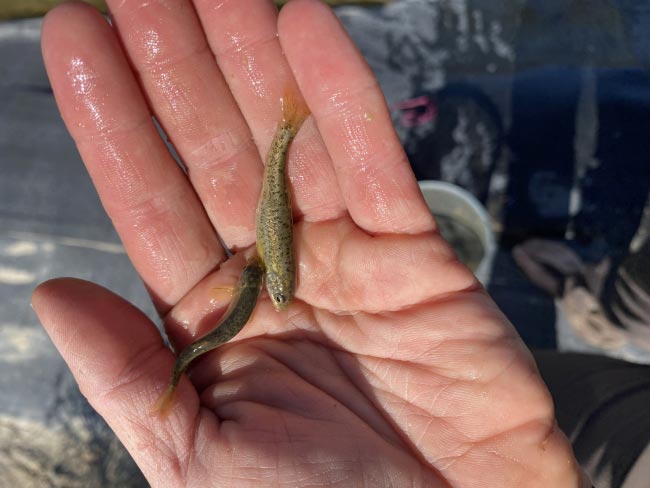Long Valley Speckled Dace Imperiled by Geothermal Development, Climate Chaos, Invasive Species
August 8, 2024 - LOS ANGELES— In response to a petition by the Center for Biological Diversity, the U.S. Fish and Wildlife Service on Wednesday proposed protecting the Long Valley speckled dace under the Endangered Species Act as an endangered species. The dace is a rare subspecies of minnow that inhabits springs in the eastern Sierra Nevada.
“Endangered Species Act protections will provide a badly needed lifeline for Long Valley speckled dace, which survive at only two locations,” said Jeff Miller, a senior conservation advocate at the Center. “This is a good first step, but these tenacious minnows will need emergency action and a coordinated recovery effort.”
Long Valley speckled dace are endemic to the Long Valley volcanic caldera and the upper Owens River watershed in eastern California and are not found anywhere else in the world. These tiny fish once lived in springs and creeks throughout the upper Owens Basin in Mono County, but now they are barely hanging on in the wild in one spring and along a small creek east of Mammoth Lakes.
Long Valley speckled dace face threats from invasive fish, water diversions, geothermal energy development, livestock grazing and climate change and drought which have dried up suitable springs and stream habitats. The Center petitioned for Endangered Species Act protection for Long Valley speckled dace in 2020.
Background
The Long Valley speckled dace is a subspecies found only in the Long Valley volcanic caldera, east of Mammoth Lakes, in Mono County, California.
Long Valley speckled dace are adapted to live in warm springs and creeks. Geothermal energy development and water diversions have reduced or dried up springs throughout Long Valley. Excessive pumping of groundwater and climate change have contributed to their decline since spring habitats for speckled dace are fed by aquifers that depend on snow melt for recharge. These dace have disappeared from suitable habitats, including Hot Creek, Little Alkali Lake and various isolated springs and ponds.
Only one very small and declining natural population of Long Valley speckled dace remains, at Whitmore Hot Springs. They have been translocated to a few locations along O’Harrel Canyon Creek. A few hundred of these fish are also maintained in an artificial pond at a managed refuge in Inyo County, outside the species’ historical range.
 Long Valley speckled dace in a hand Credit: Rosa Cox/CDFW
Long Valley speckled dace in a hand Credit: Rosa Cox/CDFW
The Center for Biological Diversity is a national, nonprofit conservation organization with more than 1.7 million members and online activists dedicated to the protection of endangered species and wild places.
Source: Center for Biological Diversity








